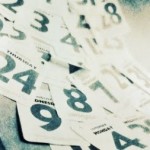“A mind once stretched by a new idea never regains its original dimensions.”
Anonymous
What do you see?
o o
o o o
o o
o o o
Really look at the objects, what do you see?
Do you see five sets of two? Do you see two sets of two and two sets of three?
Do you see two sets of four and one set of two? Do you see ten dots?
Do you see 5 + 4 + 1? Do you see 2 + 4 + 3 + 1?
Do you see other ways to represent these objects? So we have just explored or honored six different ways a child might organize these objects. Imagine what this might look like in your classroom. What would your students say? What questions would you ask them to stretch or push on their thinking? Imagine if we gave our students opportunities to talk about and discuss numbers at a deeper level all the time.
This past week I had the opportunity to attend a three-day presentation / workshop on teaching math with two other teachers from my school. We will attend another three-day presentation later this month. We are charged with taking this information back to our teachers and staff. The presentation was absolutely what we need, what our students need. But I wonder if everyone will see it that way. Will teachers embrace a different way of thinking about math, exploring multiple pathways to solving the same problem, honoring problem solving and critical thinking? Or will they get stuck in their thinking and keep teaching math the way they have always taught math?
So now the planning begins. How do we bottle our excitement, our enthusiasm, our desire to give our students what they need to learn math? How do we make it safe for teachers to share their ideas and lean into their own discomforts about math? This will change the way we teach math, the way we think about math, the way we do math. This is way bigger than increased test scores and making annual yearly progress. It is about teaching kids how to manipulate numbers, how to decompose numbers, how to solve problems and think mathematically, while helping them make math connections.
I’ll be honest, when someone says, “math or algebra, number sense or computation,” I immediately get anxious. I think back to 7th grade when I started to dislike math. My teacher said, “It’s easy. Why don’t you get it?” or “Just follow the steps. It is very clear how to get the correct answer.” We only learned one way to solve an equation or a math problem; the right way. So really your answer was right or wrong. No thinking or making connections, no real critical thinking or problem solving. What a relief, we are changing how we think about math and how we teach math. I will keep you posted as we begin our journey of embracing math and celebrating our students, our mathematicians.








